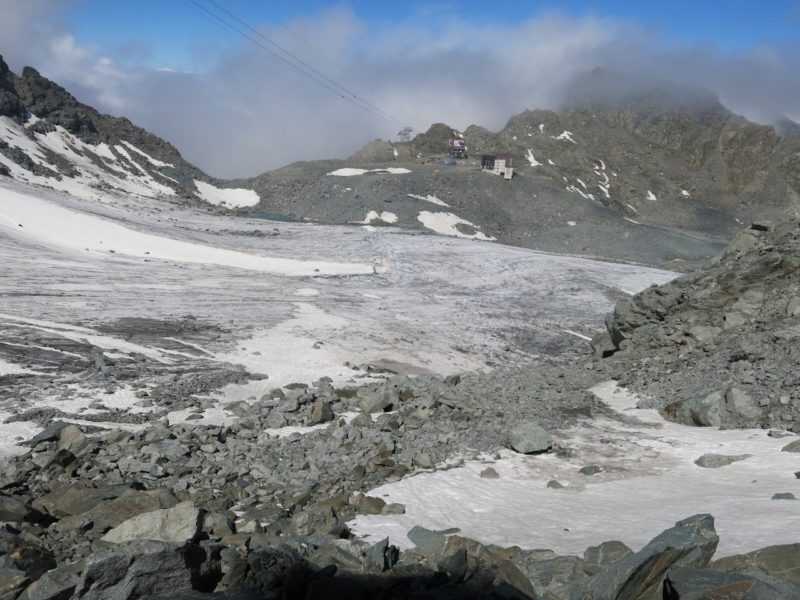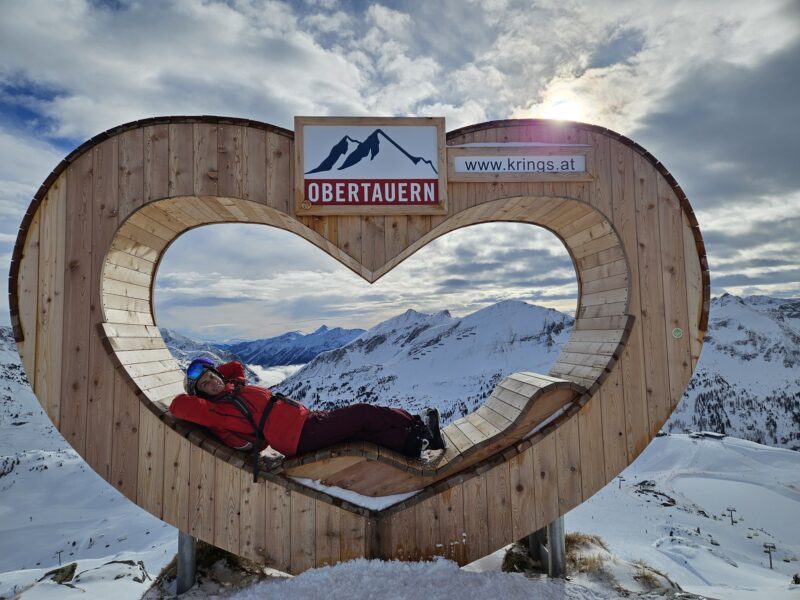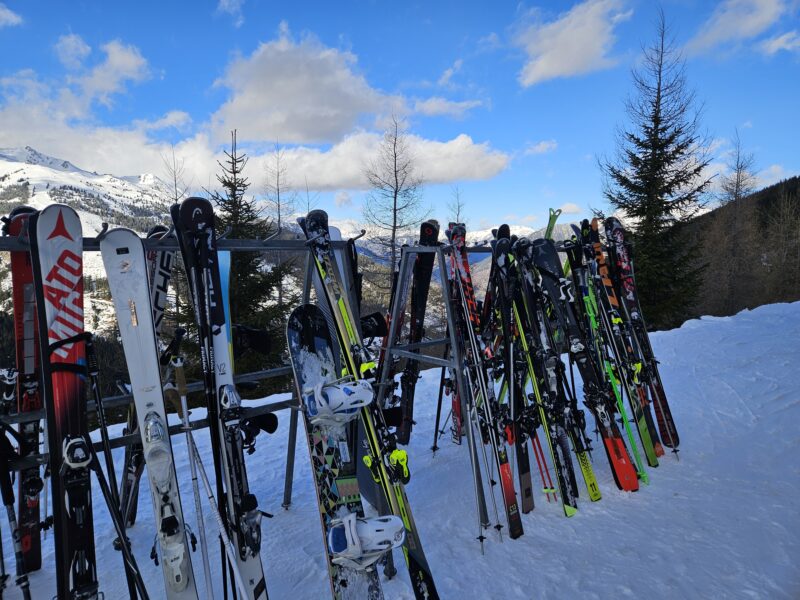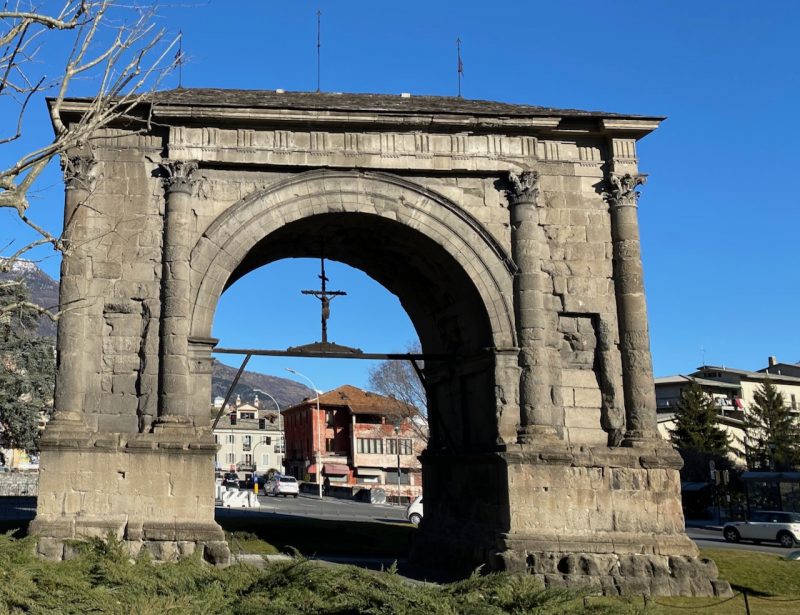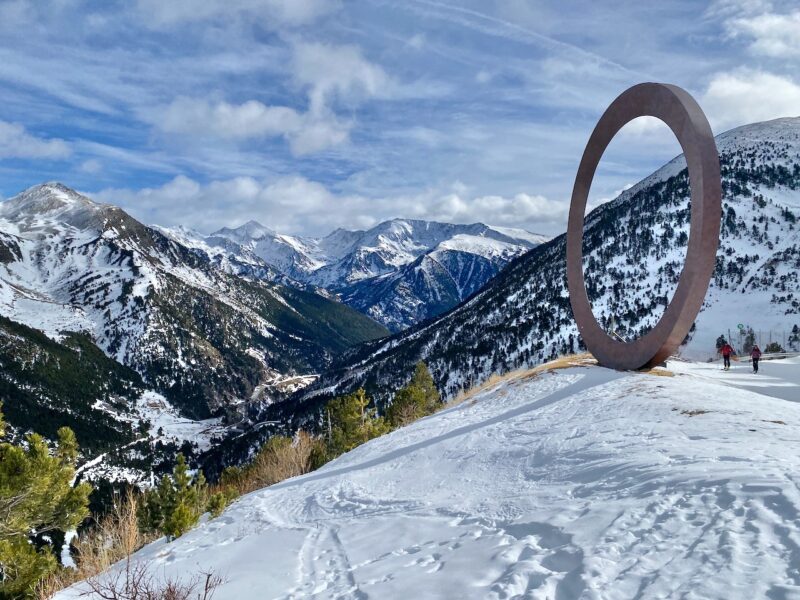CLIMATE CHANGE COULD LEAD TO TENS OF THOUSANDS OF JOB LOSSES IN WINTER TOURISM
17th February 2020 | James Cove, The Alps
Last modified on May 15th, 2021
Two new reports make grim reading for those involved in winter tourism. The future looks bleak, but there is some hope.
This week in the mountains the temperatures are very high.
They are not temperatures normally associated with the middle of winter.
At the weekend in the Alps it was 10 degrees at 2,000m with the freezing level at 3,200m in places.
In the Pyrenees it was 12 degrees at 1,800m.
Le Mourtis resort in the Pyrenees mountains has announced it has been forced to close its slopes mid-season.
It had to do the same thing last winter.
The Luchon-Superbagnères resort in the Pyrenees has used a helicopter to move 50 tons of snow from higher up the mountain to its lower slopes.
It cost €5,000 (£4,150).
Un hélicoptère pour enneiger une piste de la station Luchon Superbagnères. Sur fond de montagne dénudée. En plein hiver.
Je trouve cette vidéo très triste.
Source : https://t.co/9j6TOHw8TQ pic.twitter.com/HqbQtteI9v
— Hugo Clément (@hugoclement) February 15, 2020
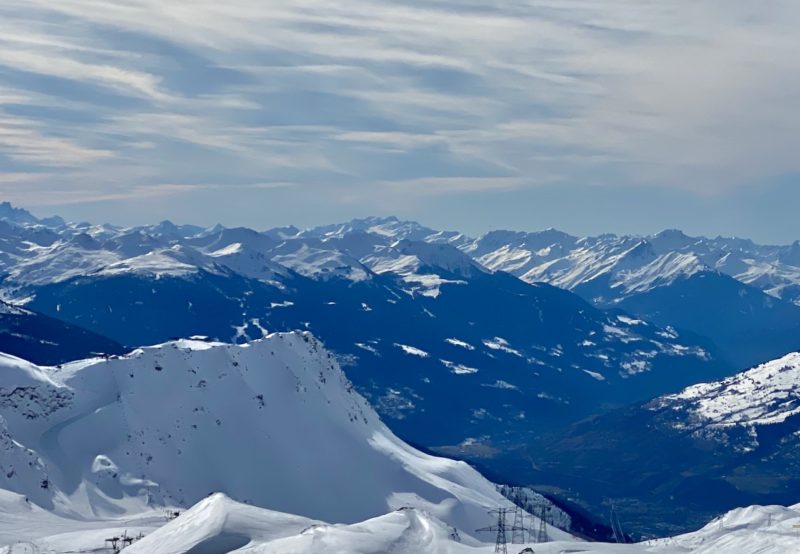
Middle of February in the Alps. Image © PlanetSKI.
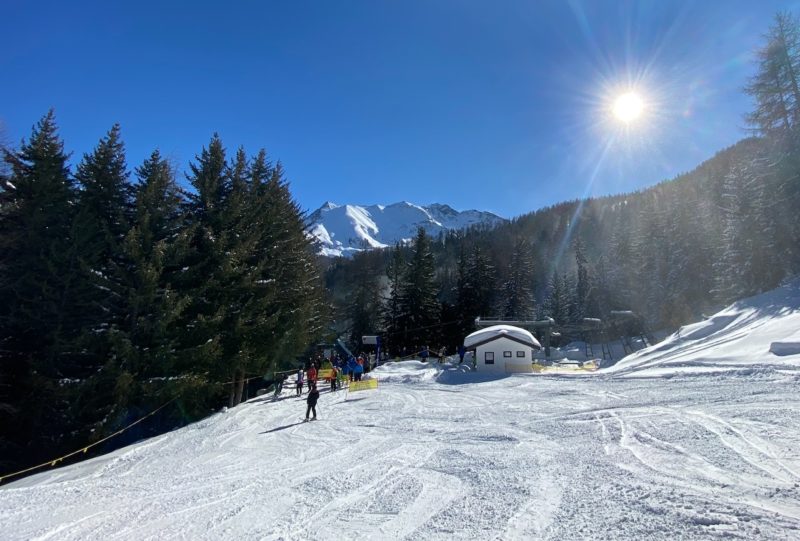
Middle of February in the Alps. Image © PlanetSKI.
Lower resorts in the Alps have been badly hit with thin strips of artificial snow keeping things going – just.
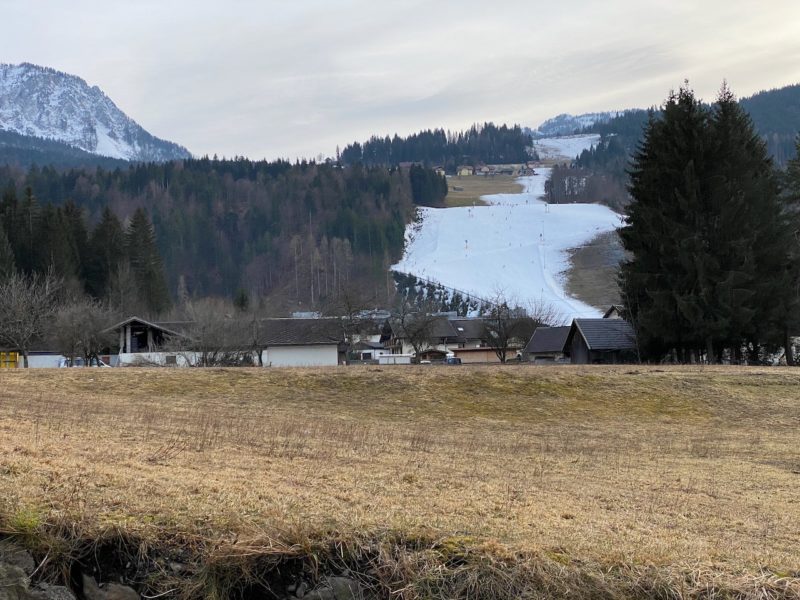
Austrian Alps. Image © PlanetSKI.
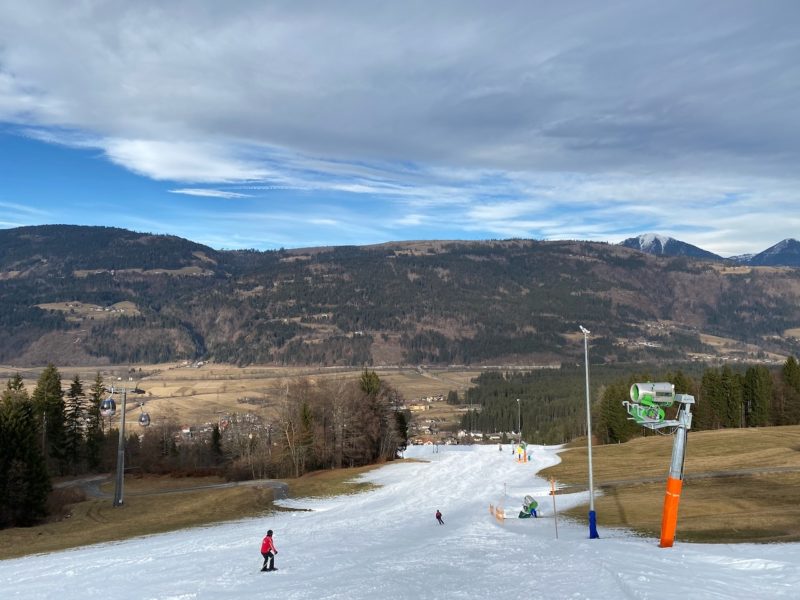
Austrian Alps. Image © PlanetSKI.
However the lack of snow at low altitude is helping ones that are higher as people head there instead.
I was recently in Schladming in Austria that has skiing going up to over 2,000m and the resort told me skier numbers are up this winter as it is surrounded by small resorts at low altitude.
“People want to ski so they come to us as we have a better chance of good snow,” I was told.
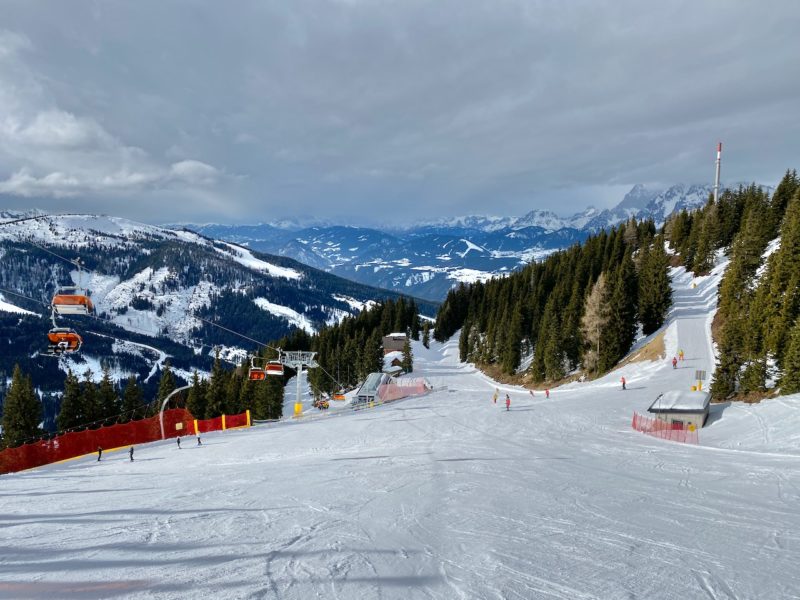
Schladming, Austria. Image © PlanetSKI.
In a report examining the impact of climate change on future winter games, the International Olympic Committee warned that as temperatures increase there will be fewer places around the world suitable for competition.
The IOC report forecast that an increase of 1 degree Celsius (1.8 degrees Fahrenheit) would push the snowline up by 150m.
“The ski season may start up to a month later and finish up to three months earlier,” said the IOC.
As skiers and snowboarders we should obviously be concerned, but what about the alpine communities themselves where whole livelihoods depend on winter tourism?
Economic impact on mountain communities
In the Tirol in Austria tourism makes up 18% of economic output, much of it in the winter months.
“Some regions and areas will lose ski tourism by the mid of the century, or even earlier,” said Robert Steiger, an assistant professor at the University of Innsbruck.
He has studied the impact of climate change on tourism.
“Higher areas will survive, but they will have to invest more in snowmaking and to cope with the additional tourist inflow.”
Climate change is expected to cost Austrian tourism €300m a year, according to one of the country’s leading environmental protection organisations.
“If greenhouse-gas emissions continue at the same level, snow will almost disappear at lower levels by the end of the century,” said Marc Olefs, head of department for climate research at Vienna’s Central Institute for Meteorology and Geodynamics.
This will mean an end to snowsports-based activities in some resorts.
It is similar in some parts of Switzerland and France.
The high-altitude resorts have decent snow on their top runs but lower down it is a different story.
The Auvergne-Rhone-Alpes region in France has some of the major French ski resorts including those in Les3Vallees plus Val d’Isere and others.
Tourist spending was €21bn in 2018 and it generated almost a 10th of GDP and 171,000 jobs.
Snow cannons are now an integral part of the alpine landscape and help this economic activity.
Diversifying activities
Resorts across the world, though, are doing more to promote other winter activities.
PlanetSKI tried two ona recent visit to Utah.
Main Street, snowshoeing and Olympic bobsled
Plus there is a drive to promote summer in the mountains with a range of other activities on offer.
We are keen supporters of summer in the mountains too:
Our summer trip to Chamonix ends
Verbier in the summer – pure energy
Many resorts now offer a whole host of other sporting and leisure activities to draw people to the mountains.
North America
“The future of our multi-billion-dollar ski industry depends on our climate choices. To preserve it and the thousands of jobs it provides requires us to achieve a low carbon transition,” says Daniel Scott from the University of Waterloo in Canada.
He maintains that higher emission reduction pledges consistent with the Paris Climate Agreement are needed to preserve ski tourism in Eastern Canada and the USA.
He conducted research in collaboration with the University of Innsbruck in Austria and the School of Sports at the Sport University in Beijing.
A successful Paris Agreement would limit ski season losses across the region to 12% -13% in mid-century and only 13% -18% by late century.
In a high emission future ski seasons will be halved at most of the 117 ski areas included in the study, with only 6% of Ontario ski areas and 30% in the US Northeast still able to remain economically viable as early as mid-century.
“This research shows the ski industry in North America is at a major crossroads,” says David Erb, executive director of Protect Our Winters Canada.
“If we can stay on track with our commitments to the Paris Climate Agreement, the industry can adapt and continue to operate, but if we don’t, the future of the industry is very much in doubt. Essentially, the future of winter is in our hands.”
RELATED STORIES
French President vows to protect Mont Blanc
Italian resort bans single use plastic
Swiss glaciers melt by 10% in last 5 years

